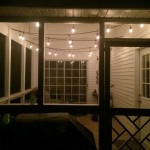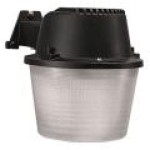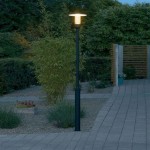How to Install Outdoor Up Lighting
Outdoor up lighting adds dimension, drama, and a touch of elegance to any landscape. From illuminating trees to highlighting architectural features, uplighting creates a captivating ambiance, particularly in the evening hours. While the installation process might appear daunting, with careful planning and the right tools, it is a project that can be undertaken by homeowners with basic DIY skills.
Choosing the Right Uplights
The first step in installing outdoor uplighting is selecting the appropriate fixtures. There are numerous options available, each with its own unique characteristics and benefits.
- LED Uplights: LED bulbs offer long lifespans, energy efficiency, and a variety of color temperatures, making them a popular choice for outdoor lighting.
- Halogen Uplights: These offer a bright, warm white light, but they consume more energy and have a shorter lifespan than LEDs.
- Incandescent Uplights: While still available, incandescent uplights are becoming less common due to their high energy consumption and relatively short lifespan.
Consider the following factors when selecting your uplights:
- Brightness (lumens): The brightness of the light will depend on the size and distance of the feature being illuminated. Consult the manufacturer's specifications for lumen output.
- Color Temperature (Kelvin): This refers to the color of the light, with warmer temperatures producing a yellow or orange glow and cooler temperatures producing a white or blue light. Choose a color temperature that complements your landscape and desired ambiance.
- Beam Angle: The beam angle determines how wide the light spreads. A narrow beam is ideal for highlighting specific features, while a wider beam is suitable for illuminating larger areas.
- Style: Choose a style that complements your home's architecture and landscape. Consider sleek, modern designs for contemporary houses or classic, traditional designs for older homes.
- Durability: Outdoor uplights must withstand the elements, including rain, snow, and extreme temperatures. Look for fixtures with a weatherproof rating (IP rating) of at least IP65.
Planning the Installation
Before you begin installing your uplights, it is essential to plan carefully. This includes:
- Identifying the Features to Be Illuminated: Decide which trees, shrubs, architectural details, or other elements you want to highlight. Consider the size and shape of each feature, as well as its proximity to the house.
- Determining the Number and Placement of Uplights: The number of uplights required will depend on the size of the area being illuminated. Consider using multiple uplights for larger features, such as trees, and one or two uplights for smaller features, such as shrubs or statues. Experiment with placement until you achieve the desired effect.
- Choosing the Power Source: Most outdoor uplights require a 12-volt electrical connection. You can choose to run the wiring directly to an existing electrical outlet or install a dedicated transformer. If you are using a transformer, you will need to determine its location and ensure it has enough capacity to power all of your uplights.
- Considering Safety: Ensure that all wiring is properly routed and protected from the elements. Avoid running wires near walkways or areas where they could be a tripping hazard. Use weatherproof junction boxes and conduit for all electrical connections.
Installing the Uplights
Once you have planned your installation, you can begin installing the uplights themselves. The specific steps may vary depending on the type of uplight and your chosen power source, but the following general instructions apply:
- Locate the Uplights: Use stakes or string to mark the desired location of each uplight.
- Dig the Trenches: Dig shallow trenches to accommodate the wiring. The depth of the trench will depend on your local building codes and soil conditions.
- Install the Wiring: Run the wiring through the trenches, making sure to secure it using staples or clips. If you are using a transformer, connect the wires to the transformer first.
- Install the Uplights: Mount the uplights on the desired locations using stakes, clamps, or other mounting hardware. Ensure that the fixtures are level and securely attached.
- Connect the Wiring: Connect the wires from the uplights to the wiring coming from the transformer or electrical outlet. Use weatherproof connectors for all electrical connections.
- Test the System: Turn on the power and test the uplights to ensure they are working properly. Adjust the beam angle and height of the fixtures as needed to achieve the desired effect.
Installing outdoor uplighting is a rewarding project that can transform the look and feel of your landscape. By following these steps and taking the necessary precautions, you can create a stunning and inviting atmosphere for your outdoor space.

How To Easily Install Landscape Lighting With No Tools

How To Hang Patio Lights

The Easiest Way To Install Low Voltage Landscape Lighting Abby Organizes

Outdoor Low Voltage Lighting Diy Family Handyman

Tree Uplighting Techniques For Spring 1stoplighting

How To Install Outdoor Lighting And Diy Family Handyman

How To Hang String Lights Outdoors

How To Install Low Voltage Outdoor Landscape Lighting The Garden Glove

Install Outdoor Lighting Innovative Light Designs

How To Install Landscape Lighting Transformers Connectors Led Fixtures
Related Posts







